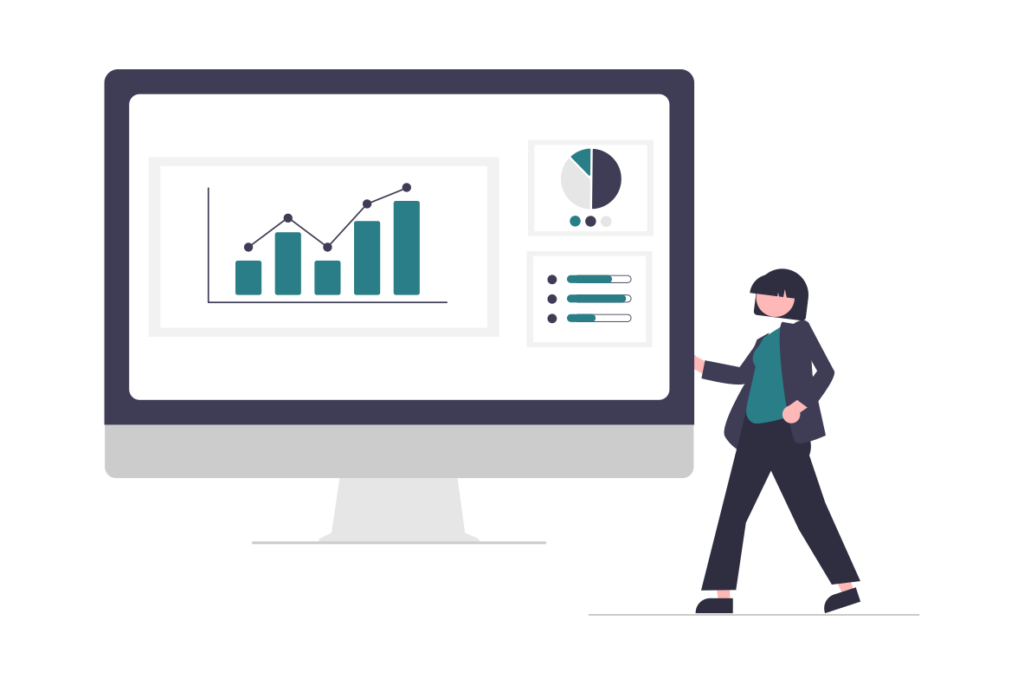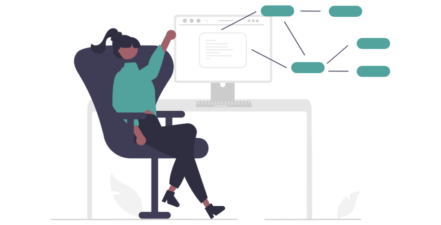Stakeholder Management Guide: Definitions, Processes & More

Stakeholder management is an important process for governments and organizations all over the world. In this guide, we share stakeholder management definitions, why it matters, processes, best practices, and more.
Whether you’re just starting to take a strategic approach with managing stakeholders or you’re an executive or consultant with decades of experience, we hope you’ll come away with plenty of value in the form of clarity, ideas, and resources you can explore further.
What is Stakeholder Management?
Stakeholder management is defined as the process by which you organize, monitor, and improve your relationships with your stakeholders. Usually this involves identifying stakeholders, analyzing their needs and expectations, and then planning and implementing various tasks to engage with them. This will allow you to coordinate your interactions and assess the quality of your relationships so that you can achieve an outcome, legal requirement, or strategic benefit.
You might also hear stakeholder management referred to as stakeholder engagement, community engagement, public consultation, civic engagement, public participation, and several other terms. There are some subtle differences between these terms, how they’re used, and preferences in different jurisdictions, but they each have very similar processes.
Learn more about what stakeholder management is.
What’s a Stakeholder? Stakeholder refers to any people or groups who are impacted by a project, initiative, policy or organization.
Read more about what stakeholder means.
What Isn’t Stakeholder Management?
Sometimes you’ll come across other definitions of stakeholder management that focus on the idea that you can create a plan to manage your stakeholders in order to get them to do what you want. But this is a common misconception.
Although stakeholder management can help you achieve various legal and strategic objectives, the stakeholder management process isn’t designed to influence or control people. It isn’t marketing and it isn’t public relations.
So, in this guide, we’re not going to show you how to herd sheep, put them in neat little pens, and pretend they’re heading in the direction you want. But we are going to show you how you can achieve objectives like meeting your legal requirements and gaining strategic advantages through stakeholder management.
The Benefits of Stakeholder Management

Stakeholder management is an important process for many organizations and projects, and has a range of benefits and use cases. For instance:
- Running a successful project — Managing stakeholders (and doing it well) can help you develop and maintain good relationships with the communities who will be affected, along with other stakeholders.
- Supporting stakeholder engagement – By first identifying stakeholders and assessing their interests, you can create a firm foundation on which to build your stakeholder engagement strategy.
- Meet legal obligations – With increasing legislation around privacy protections and the right to information, it’s even more important than ever that organizations or projects have a clearly defined stakeholder management plan and protocols.
- Manage expectations – With community expectations higher than ever (and still rising), organizations can benefit from greater understanding and careful management.
- Manage risks – Managing stakeholders in a systematic, controlled way can help to identify, mitigate, and avoid a range of risks associated with your organization or project.
- Gain a social license – The stakeholder management process can help to identify opportunities that allow you to gain a social license to operate.
- Build social capital – Because social capital requires relationships to generate value, managing stakeholders effectively can accelerate the growth of your social capital.
- Improve reputation – Through the stakeholder management process, your organization can build relationships with key stakeholders and improve your reputation on specific issues, like transparency and sustainability.
- Greater business intelligence – Understanding stakeholder concerns and interests can lead to ideas for products or services that will address stakeholder needs or allow the company to reduce costs and maximise value.
- Align business goals – Seeking to understand your stakeholders while communicating your business goals can help you better align with stakeholders.
- Increased stakeholder support – Stakeholder management can sometimes lead to greater support by improving communication, increasing transparency, and building trust.
- Reduce delays – Strategically managing stakeholders can allow you to quickly provide information and request feedback, and stakeholder insights and cooperation can help to reduce potential project delays.
- Improved sustainability – Managing and engaging with stakeholders delivers insights that are key to sustainable decision making.
- Support corporate governance – Through the stakeholder management process, you can identify and manage a range of demands and expectations from various governing groups and stakeholders.
- Gain a competitive advantage – Any organization can gain a competitive advantage by more effectively understanding their stakeholders, identifying opportunities, and uncovering potential risks.
The Stakeholder Management Process
So, what does a deliberate, strategic approach to stakeholder management actually look like? Generally, you could break it down into four main steps:
Step 1: Understand Your Stakeholders
The key to a successful stakeholder management program is to start with a good understanding of your stakeholders. And make sure you are testing and refining that understanding throughout the process.
After identifying stakeholders, begin your stakeholder analysis by considering and making note of:
- Other information – What other information can you collect on stakeholders that will help you understand their needs, priorities, preferences and concerns?
- Demographics – Based on demographic data, are you engaging with a broad cross-section of the community and stakeholder groups?
- Social networks – Are you focusing on the important, yet often undocumented, social connections between stakeholders?
- Salience – Have you considered using the Salience Model to examine the power, urgency (need for immediate action) and legitimacy (appropriate stakeholders) — and the interaction or groups of stakeholders this creates?
- Expectations – What are the stakeholder expectations and how do they compare with the scope and expectations of the project or organization? Is there a gap or mismatch? If so, how will this be managed?
- Preferences – What information do stakeholders want from you, how often, and in what format/channel?
- Interests – What financial/social/emotional interest do they have in the outcome of your work? Is it positive or negative?
- Motivations – What are the key motivations that will drive their perceptions of your project or organization and their interactions with you?
- Opinions – What is their current opinion of your organization and project? Is it based on good information?
- Influences – Who influences their opinions? Who do they influence, in turn?
Step 2: Use Mapping to Organize Your Stakeholders
To continue your stakeholder analysis, it’s helpful to ‘map’ or visualize your stakeholders in relation to other key stakeholders and key criteria. This will enable you to strategize how you will prioritize and approach either individual, organization, or group of stakeholders.
Stakeholder mapping is a term often used to describe the process of assigning values that shape priorities and strategies for each stakeholder, based on their ranking against some set criteria. Sometimes stakeholders are simply assigned a rank (of low-medium-high or 1-5) against each criteria. Often they are plotted on a matrix to provide a visual depiction of the range of stakeholders in your program. After you have ranked your stakeholders or plotted them on these matrices, you next need to consider how this information will influence your stakeholder management plan and strategy.
There are a number of standard frameworks used for stakeholder mapping:
- Salience Model
- Stakeholder Knowledge Base Chart
- Power/Interest Grid
- Power/Predictability Matrix
- Stakeholder Relationship Mapping
- Stakeholder Mapping Spreadsheets
- Multi-Dimensional Stakeholder Mapping
We cover these frameworks and methods in detail in our blog on stakeholder mapping. But you can also preview many of these below:
At Simply Stakeholders, we take a multi-dimensional approach to stakeholder mapping inside our stakeholder software.
Some of the ‘industry standard’ grids are a bit dated and don’t take into account shifting power relationships and stakeholder expectations (especially with easy access to social media and the risk-averse nature of governments when it comes to political damage). It’s important to take this into account when selecting a framework or model to ensure that you can fully understand your stakeholders and ensure your strategy caters to all their needs.
Our approach to stakeholder mapping includes:
- Segmentation based on interest and function
- Mapping connections between stakeholders
- Custom fields to track additional information such as demographics
- The multi-dimensional method (our preferred method) so that you can map on a scale from very low to very high for the criteria of:
| Influence
The level of influence a stakeholder has over the project |
Interest
The level of interest a stakeholder has on the project. |
Impact The level of impact the stakeholder has on the project. |
Depending on how relevant other mapping fields are for your organization, these can also be used to measure the level of influence, interest, and impact your project has on the stakeholder:
| Criticality
How important is it to engage with this stakeholder? |
Position
What is their current sentiment towards your project? |
Effort How much time and energy are you expending to engage with the stakeholder? |
Importantly, our software also tracks how these stakeholder mapping values change over time.
Step 3: Create Your Stakeholder Management Plan
A stakeholder management plan is a document that outlines appropriate management strategies to effectively engage stakeholders throughout the lifecycle of the project, based on the analysis of their needs, interests, and potential impact on the project’s success.
Your stakeholder management plan will include some of the information you’ve gathered from step 1 & 2 in the process, as you identified, analyzed, and organized your stakeholders. But before you jump into creating your plan, start by asking the following questions:
- What are the strategic reasons for consulting with stakeholders at this stage?
- Who needs to be consulted?
- What are the priority issues (for them and for you)?
- What will be the most effective methods of communicating with stakeholders?
- Who within the company is responsible for what activities?
- Are there any other engagement activities that will occur in the proposed time frame (perhaps with other sections of your organization)?
- Are there opportunities to collaborate to ensure key project messages are consistent and avoid consultation fatigue?
- How will the results be captured, tracked, reported, and disseminated?
It’s important to be strategic and clear about who you are engaging with (and why) before you get too far into the process. This will not only help to save time and money, but also help you manage expectations and gain trust.
Here are 5 components that should make up your stakeholder management plan:
1. Identify Stakeholders
 |
|
Remember — not all stakeholders in the same group will necessarily have unified opinions or priorities.
2. Analyze Stakeholders
 |
|
Include any other information to help better understand stakeholder needs, priorities, and issues.
3. Strategize and Prioritize
 |
|
Consider the most appropriate ways to engage with each group.
4. Assign Responsibilities
 |
|
Consider the roles and requirements for stakeholder management.
5. Monitor and Report
 |
|
Consider who you should report to, when you should report, and what you should report on.
We have quite a few resources that can help you put together your stakeholder management plan, including:
- How to Create a Stakeholder Management Plan [Webinar]
- Stakeholder Plan Foundations: How to Get Started [Blog]
- Stakeholder Management Plan in Six Steps [Blog]
Or jump straight into our online tool to create your stakeholder management plan in just 15 minutes:
Online Tool: Create a Stakeholder Management Plan
Step 4: Implement Your Plan

Once your stakeholder management plan is in place and you’ve gained acceptance from your colleagues, executive team, and other relevant stakeholders in your organization, it’s time to implement it.
This means putting in place the tools, communications, activities, and other strategies and resources you’ve identified to manage your stakeholders. Plus, ensuring that the other responsible people implement their assigned activities and tasks.
Step 5: Ongoing Monitoring and Reporting
Implementing your current plan is just the beginning. Throughout the implementation, you should monitor your stakeholders to see how they respond to the strategies and check whether you’re meeting the objectives of your plan, project, and organization. Regular reports are important so that you can keep the relevant people in the loop — and track how your plan is progressing.
Monitoring and reporting will often reveal opportunities to improve your processes — new insights into stakeholders, feedback, changing expectations, emerging issues, and changing sentiments. As you learn new things about your stakeholders, use this as an opportunity to adjust your stakeholder management strategies.
Advanced Stakeholder Management Tips and Best Practices
We’ve already covered some basic processes and plans you can follow to get started with stakeholder management. But let’s dive a little deeper into some best practices and more advanced tips you can apply to help you achieve the best possible outcomes.
Get Compliant
With increasing legislation and concerns around privacy and the use of personal data, it’s more important than ever to have clear, well documented processes for your stakeholder management.
For instance, if you are working in or providing services to the European Union and the United Kingdom, you must take particular note of the GDPR requirements that came into play in May 2018. Most other countries have also increasingly tightened requirements for:
- Legitimacy – What data you can legitimately collect and store
- Permissions – How you seek permission for collecting that data
- Usage – How you use that data, and whether it is for a legitimate purpose and consistent with the reasons you gave for collecting the data
- Storage location – Where you store that data and the location of any people who need to access that data
- Security – What security measures you have in place to protect that data
- Requests – Making it easy for the public to request a copy of the data you store on them, and providing it in a machine-readable format
Be Comprehensive
After identifying your stakeholders, review your stakeholder lists to ensure they genuinely represent the whole range of stakeholders. Your needs assessments and engagement programs are all dependent on you having up-to-date and representative stakeholder lists, so make a note to check for comprehensiveness on a regular basis.
Be Honest and Transparent
Honesty is the best policy with stakeholder management! Be honest about why and how you gather information from stakeholders, including social media tracking (going above and beyond the legislated requirements). Be transparent about what you are collecting, why, and what you plan to use the data for.
Segment Stakeholders
After analyzing and mapping your stakeholders, segment them into lists to help you provide a more relevant, tailored stakeholder experience. You could slice your list by a variety of attributes, including location, demographics, industry, interest, needs, influence, and impact.
Another benefit of this is that you can gain insights into how specific stakeholder groups are responding to your communication and activities. And you can make sure you’re reaching the right people with the right message at the right time.
Evaluate Your Plan
Evaluation is an important part of stakeholder management but too many organizations don’t do this well. In particular, you should evaluate whether your plan was successful based on pre-defined measures of success. We talk about this inside our eBook on evaluating stakeholder engagement and public consultation and our webinar on how to evaluate your stakeholder engagement.
Audit Your Data Processes
Regularly audit your data management processes to ensure they’re appropriate, compliant, and efficient. Check that the metrics you’re gathering are fair — to ensure that your conclusions and recommendations accurately represent stakeholder views and requirements.
Another issue to consider is whether you’re keeping your stakeholder system up-to-date. Encourage your team to regularly add new stakeholders to your lists and ensure all interactions are automatically or manually added to the system. The sooner data is added, the less likely it’ll be missed or forgotten.
It’s also a good idea to run maintenance on your data to clean it up. Look for duplicate stakeholder records and merge them. Or (ideally) use a stakeholder management system that allows for sophisticated cross-project stakeholder sharing to minimize stakeholder list duplication and keep your data squeaky clean.
Set Up Shared Stakeholder Lists
Stakeholder management is a huge task — and one best shared with your team. So, make sure that your contact list is in a format that’s easy to share, and allows multiple to work on it simultaneously. The problem that so often occurs with spreadsheets is that you end up having issues with version control and information spread across multiple places. Once you are working inside an SRM like Simply Stakeholders, you can be confident that all users with permission have access to the latest and most up-to-date list.
Of course, be aware of privacy and other legislation around the use of personal information —make sure you are still compliant with the legislation in your country.
Collect the Right Information Right From the Start
From the start of your stakeholder management process, consider what information you might need from stakeholders in future in order to contact them and gather meaningful insights. For example, if you have a signup form on your website, ensure you include all the fields that are important to track. For example, a postcode or area code can allow you to tailor your insights and communication to very specific locations.
This will save you time gathering information manually, and give you richer information on each stakeholder — above and beyond just their name and email address.
Of course you do need to balance this against form best practices, ensuring that you don’t end up with a form that’s so long that most stakeholders won’t complete it.
Manage Grievances
Grievance and complaints handling is an important part of stakeholder management in most organizations. A well-functioning grievance mechanism provides a transparent, credible, and fair process to all parties. It enhances outcomes and gives people the satisfaction that their complaints have been heard, even if the outcome is less than optimal.
A good complaint handling process helps build trust as part of the broader community relations activities and contributes to the overall success of the company’s social performance.
Get Inspired and Think Outside the Box
When creating your stakeholder management plan and deciding on what activities you should include, think outside the box — and consider new, tech-enabled methods that may not have been previously available. Explore case studies, academic papers, new platforms, and data capabilities to see what’s possible!
How to Select the Right Stakeholder Management Software
One final, important element to stakeholder management that we’ve touched on already is your software or tools. There’s a lot that goes into the stakeholder management process — to do it properly (especially at scale or over a long period of time), you really need the appropriate tools for the task.
Typically, organizations use one of the following tools:
- Spreadsheets (like Excel)
- CRMs or Customer Relationship Managers (like Hubspot or Salesforce)
- SRMs or Stakeholder Relationship Managers (like Simply Stakeholders)
Firstly, if you haven’t already, it really is time to leave the spreadsheets behind. They don’t offer enough collaborative features (including version control), automations/integrations, analysis/tracking, and reporting functionality. Plus, they’re difficult to offer the level of security and privacy that today’s organizations need when handling people’s data.
Now, if you’re trying to decide between a CRM and SRM, it can be tricky if you’re new to these types of software. At first glance, they might even look pretty similar.
So, what are the similarities and differences between the two? When looking at most CRM products on the market from a stakeholder management perspective, compared with Simply Stakeholders, here’s what you’ll find:
| CRM (Customer Relationship Manager)
Designed to manage and track the sales process |
SRM (Stakeholder Relationship Manager)
Designed to manage and track stakeholder relationships and issues |
| ✅ Cloud-Based
✅ Collaboration tools ✅ Reporting and analytics ✅ API Integrations ❌ Multiple Projects ❌ Stakeholder mapping ❌ AI-driven sentiment insights ❌ Project history ❌ Simplified data re-use |
✅ Cloud-Based
✅ Collaboration tools ✅ Multiple Projects ✅ Reporting and analytics ✅ API Integrations ✅ Stakeholder mapping ✅ AI-driven sentiment insights ✅ Project history ✅ Simplified data re-use |
While they have some core functionalities in common, you’ll soon find that a CRM falls short on managing complex projects and stakeholders, and lacks important features for analysis and tracking. So, if you’re serious about managing your stakeholders, make sure you trial purpose-built stakeholder software.
Read more about the difference between a CRM vs SRM. We’ve also covered the reasons CRMs might not be working for your project or organization.
Exploring software to support your stakeholder management process? When it comes to stakeholder software, Simply Stakeholders is a great choice for organizations of all sizes. It offers a user-friendly interface, one place for all your stakeholder interactions, stakeholder mapping, and cool features like AI-driven analysis.
Check out a demo of Simply Stakeholders here:
Learn More
We’ve covered a lot of information here, but if you’d like to dive deeper into a specific aspect of stakeholder management (or you prefer your info in another format), you might like to explore these related resources:
- Top 7 Trends for Stakeholder Management in 2023 [Blog]
- What is Stakeholder Management and How Do You Get Started? [Blog]
- Stakeholder Management Plans [eBook]
- Remote Stakeholder Management [eBook]
- Stakeholder Management For Policy and Program Delivery [Webinar]
- 10 Steps for Success with Stakeholder Relationship Management [Webinar]
- What is Stakeholder Relationship Management? [Webinar]
- How to Create a Stakeholder Management Plan [Webinar]
Get In Touch
We’re always happy to share our knowledge and expertise. Get in touch and let us know what you think of the resources on this page. And be sure to subscribe to our email list to make sure you don’t miss future articles.





































